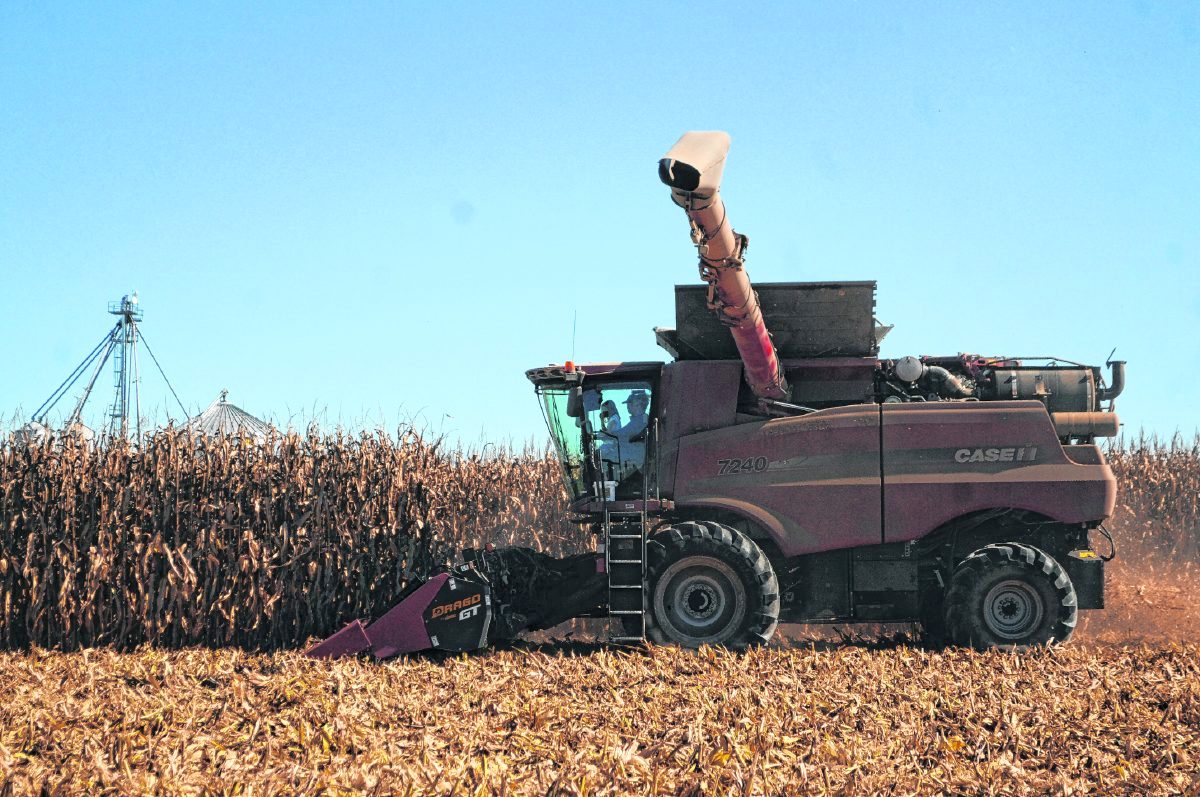
Driving around quiet rural roads in Jackson County, one might see combines shelling down rows of corn and pouring bushels of kernels into trailers.
They would see dust in the air from crops being harvested and farmers working on the field while the sun’s still out and the weather is warm.
This imagery would be seen from July through November in Indiana as farmers are working through the harvest season, particularly for corn and soybeans.
[sc:text-divider text-divider-title=”Story continues below gallery” ]Click here to purchase photos from this gallery
This year, Jackson County farmers are reporting ideal weather for their harvest and plentiful crops.
“It has been ideal this year. It has been perfect. We could’ve used a little more rain early on in August. All in all, I’m satisfied with the way things are turning out,” corn and soybean farmer Ed Jaynes said.
Jaynes farms on property he owns in Brownstown, Dudleytown, Seymour and a little bit in Jennings County. He described his harvest as a “1 in 10 year crop,” citing good weather conditions.
“If you don’t get rain for a bunch of weeks in the summer, it won’t leave nothing, and it has been doing better than it has in quite a while,” he said. “We planted about a third of our crops last year because of all the rain.”
Last fall, Jackson County experienced an above average amount of rainfall that hindered farmers’ crop and harvesting process.
Matt Mellencamp of Mellencamp Family Farms in Cortland attests to the good weather having a positive impact on his corn and soybean fields.
“The weather’s been perfect,” Mellencamp said. “It’s unusually dry for this time of year.”
His father, George Mellencamp, described the farm’s crops as “once in a lifetime.”
“I’ve been farming my whole life, and this is the best crop we’ve ever had,” he said. “We’ve had ideal weather all summer.”
Local farmer Monte Ault said he has had his share of success with his corn and soybean crops due to the weather.
Ault farms with his family, which includes his brothers, Tom, Denny and Gary, on their family property in Freetown.
Ault said he has planted 200 bushels of corn and 65 bushels of soybeans this year, compared to 150 bushels of corn and 45 bushels of soybeans last year.
When asked about what ideal weather conditions he would want for a good harvest, he said, “You don’t need 100-degree weather. You need 80-degree weather.”
Ault explained “tasseling” when tassels start to fall onto the silks of the corn while the crop is growing. When corn starts tasseling, it starts to pollinate.
“Getting rain when it’s tasseling, that’s when it pollinates. The right time is when the corn is tasseling. That’s when you want the rain,” he said.
Regarding the weather, he said it’s fairly dry currently, which is good for the later season.
“It’s not muddy. You could pull a whole semi into the field,” he said.
While the weather has been ideal, that doesn’t necessarily ensure a perfect harvest.
Gary Ault said breakdowns still happen with equipment and slow down the harvest.
“They’re every bit of a problem sometimes and can delay you, depending on the problem you have. It can keep you from harvesting for two to three days,” he said.
Moments before he said that, their combine had a hole in the hopper box, so corn was falling out onto the ground.
The Aults have been lifelong family farmers and remember when they got their first combine back in 1959. Monte first remembers driving a tractor when he was only 9.
“We didn’t use chemicals and had to pollinate corn. We had to square bales of hay and put up a bunch of bales of hay. We picked corn off the ear when we first started out,” he said.
When talking about combines of today, he said, “Now, you have computers in the combine, air conditioning, radio … GPS.”
Thanksgiving is when farmers would like to have their harvest completed. Some will end earlier or later than the holiday, depending on how their process comes along.
For the Aults, they say they should end sooner than Thanksgiving and that they are having a successful harvest.
“We’ve had about 800 acres (to harvest), and now, we’re down to about 3,” Monte said.
